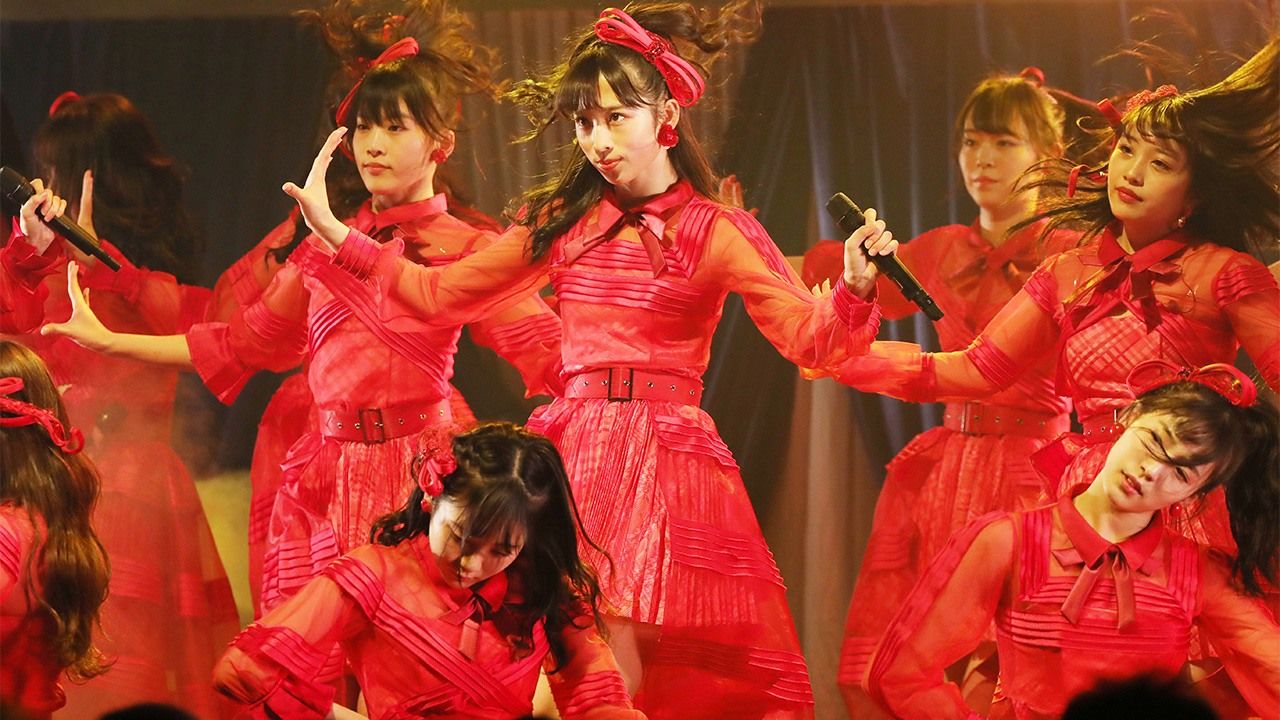
Heisei Japan’s Pop Culture Milestones: The Long Kiss Goodbye to Shōwa
Culture Entertainment Music Cinema- English
- 日本語
- 简体字
- 繁體字
- Français
- Español
- العربية
- Русский
Three Decades of Shōwa Closure
In January 1989, Japan’s Shōwa era, which had begun in 1926, closed with the death of Emperor Hirohito. On the same day, the Heisei era kicked in, as Hirohito’s son Akihito ascended the throne. The term “Heisei,” consisting of the kanji characters hei (平), meaning peace, and naru (成), “to become,” perhaps revealed an unspoken wish to be done with all that Shōwa represented. Hirohito’s reign (which lasted 64 long years) was marred by war in Asia, Pearl Harbor, two atomic bombings, the humiliation of surrender in World War II, and the subsequent hardship that scarred entire generations.
On the other hand, the Shōwa era gave us the go-go bubble economy and the “Japan as number one” phenomenon. It spawned such cultural giants as filmmakers Kurosawa Akira and Ozu Yasujirō. Tezuka Osamu became the revered figurehead of Japanese manga, while Kawabata Yasunari won the 1968 Nobel Prize in Literature. Tokyo hosted the 1964 Olympics just 19 years after Japan’s defeat and Mishima Yukio became a national icon when he publicly committed seppuku in 1970 at the headquarters of the Ground Self-Defense Forces Eastern Corps in Tokyo. Shōwa was an era of outrageous mistakes and often baroque violence, of horrifying excesses and sheer, wonderful weirdness.
And then the Heisei era (1989–2019) began, and it seemed like overnight, things got bland. Still, when you look back on the last 30 years, you see how Heisei had it rough—burdened by a 20-year recession on one shoulder and an aging, increasingly reclusive populace on the other. While Shōwa was all about blustering and and talking big, Heisei was the era of reduction and downsizing. Even the pop idols were reduced in size, personified by the elfin boys of Johnny & Associates’ various acts, the ultrathin Maeda Atsuko of AKB48, and the slender diva queen Amuro Namie, who closed the curtains on her glittering 25-year career in September 2018.
Women for Japan’s Modern Times
Much of Heisei was spent refining, sophisticating, and occasionally trashing the wrongs of Shōwa’s legacy. Take the squat toilets that had been the norm in the public restrooms of the previous era. These were replaced by Japan’s now world-famous high-tech toilets, so wonderful Barack Obama was rumored to have installed a few in the White House. Or the “sailor” style girl’s school uniforms, once metaphors of pubescent sexuality, thrown out in favor of smart blazers and pleated skirts. As soon as that happened, however, schoolgirls became a no-holds barred marketing phenomenon, spawning an era of underage girl culture that’s heavily sexual, hugely lucrative, and shamelessly exploitative.
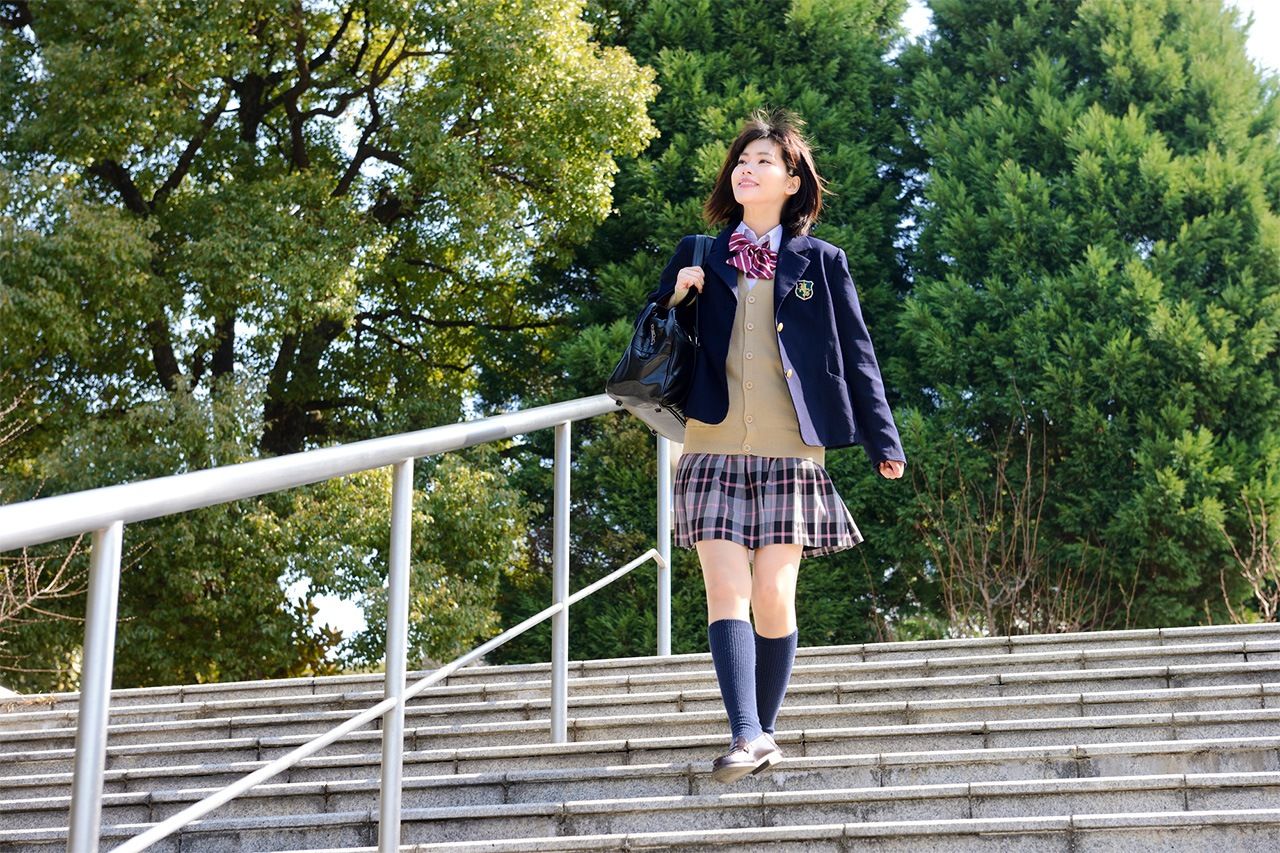
The “JK” (an acronym for the Japanese joshi kōsei, or high school girl) became a symbol of youthful—and marketable—sexuality.
Heisei was the era when sex and assimilated love became hard currency, as more Japanese women realized romantic relationships just might be a lot of nonsense compared to the overweening importance of money. No one wanted to risk turning out like their Shōwa mothers—numbed by decades of housework and trapped in monotonous, soul-crushing marriages by a lack of personal income. The “trendy drama” of the late Shōwa era held up love and marriage as the twin components of a woman’s happiness, but Heisei TV dramas exhorted women to find their true callings in the workplace.
These live-action heroines existed alongside the cheery girl characters generated by Studio Ghibli and its visionary director Miyazaki Hayao. Miyazaki’s heroines have consistently valued independence over love and truth over hypocrisy. Nor did they back down from hard work.
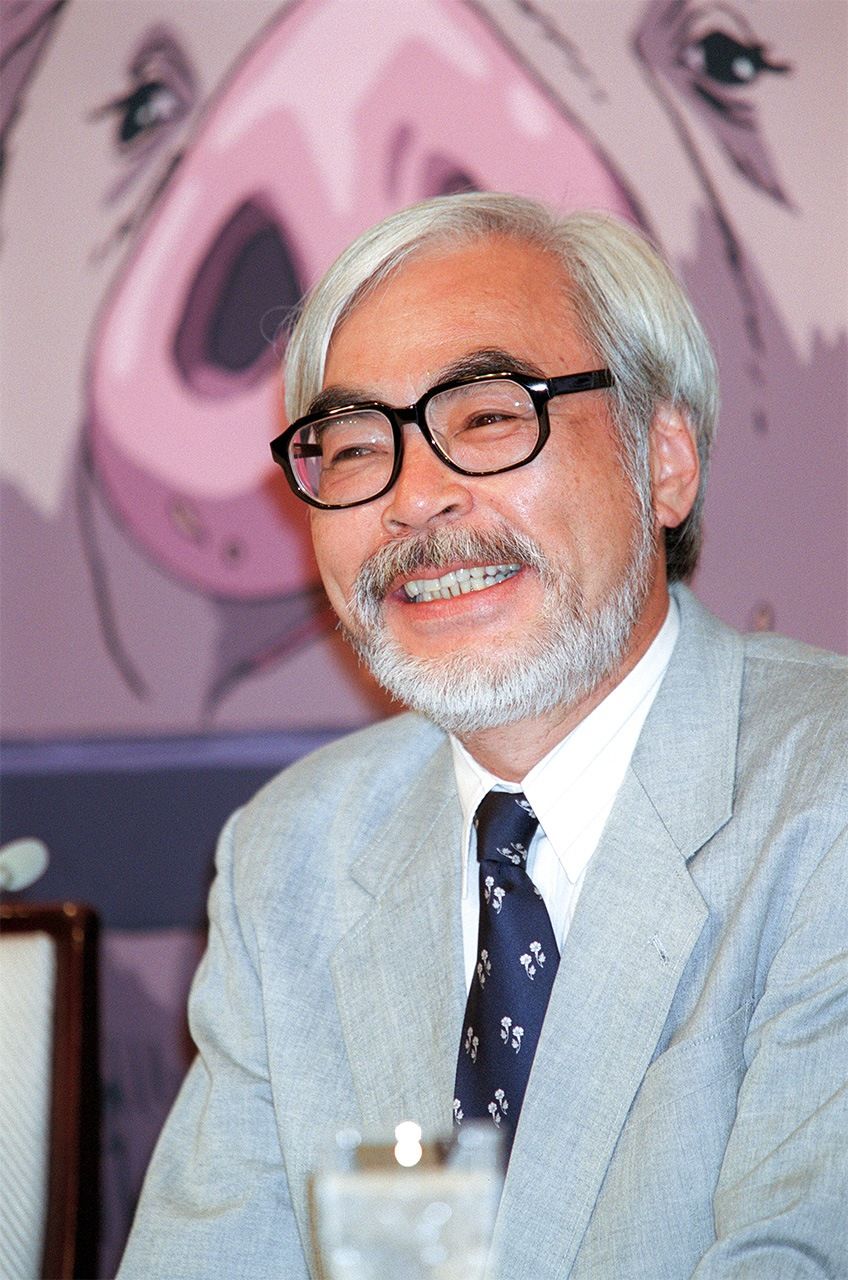
Miyazaki Hayao smiles during a press conference following the completion of Sen to Chihiro no kamikakushi (Spirited Away) on July 10, 2001. (© Jiji)
The Art of the Era
Other Heisei cultural icons include the novelist Murakami Haruki, mentioned as a possible Nobel Prize candidate several years running but not quite getting there. Comedian Matayoshi Naoki came out with the monologue heavy Hibana, which won the Akutagawa Award and was adapted into a Netflix series. Kitano Takeshi went from being a slapstick comedian to a revered media figure, busted himself up in a motorbike accident, became a filmmaker of international repute (1997’s Venice Film Festival winner Hana-bi, released internationally as Fireworks, comes to mind), then reinvented himself a couple more times before settling into his own comfortable groove.
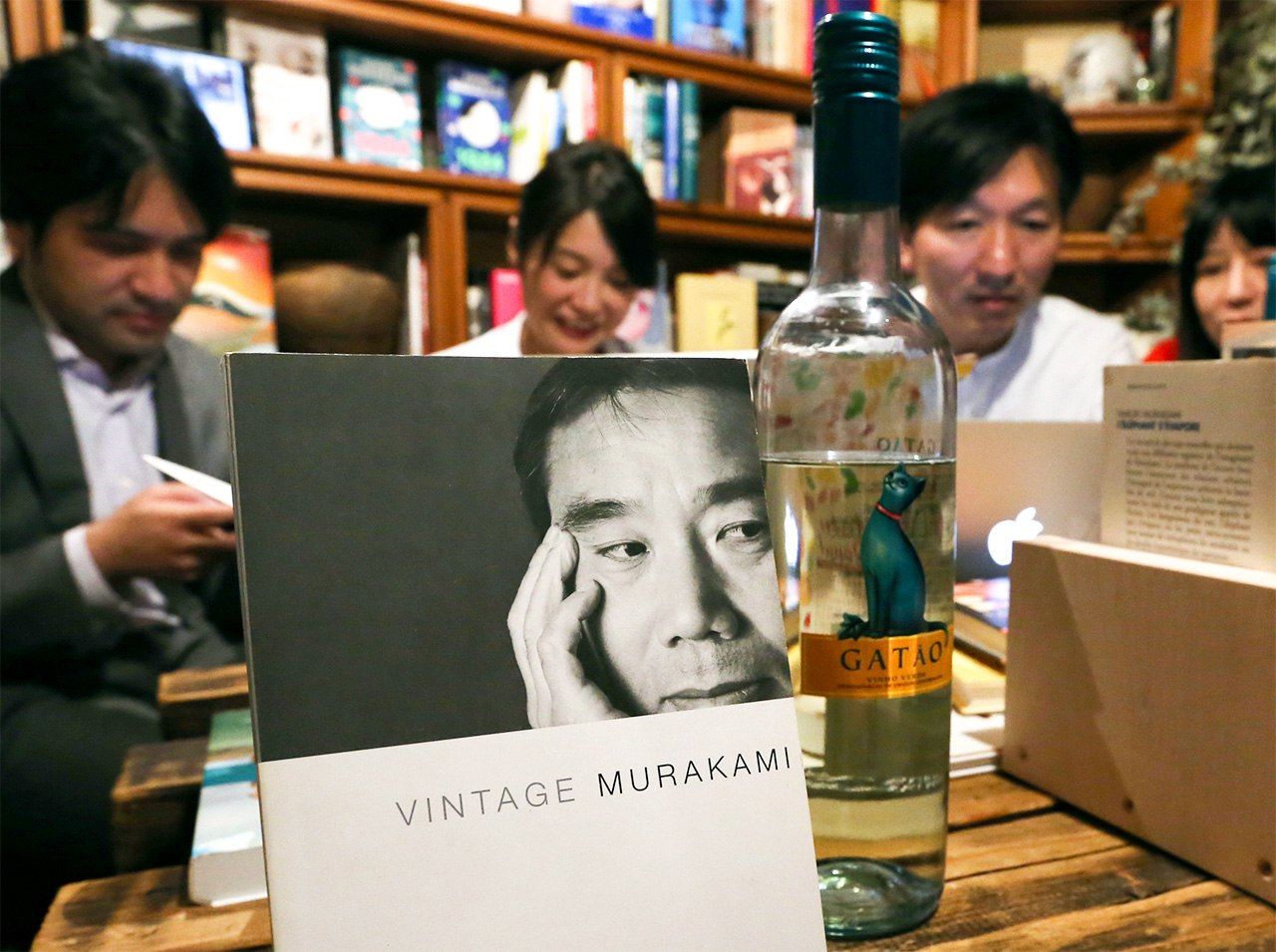
Murakami fans gathered for the October 13, 2016, literature Nobel announcement drown their sorrows at a Tokyo bookstore after their favorite author misses out on the prize once again. (© Jiji)
Directors Koreeda Hirokazu and Kawase Naomi replaced Ozu and Kurosawa as Japanese contenders on the international movie circuit. Yagira Yūya became the youngest actor to win the Best Actor prize at the Cannes Film Festival in 2004, at the age of 13, for his performance in Koreeda’s Dare mo shiranai (Nobody Knows).
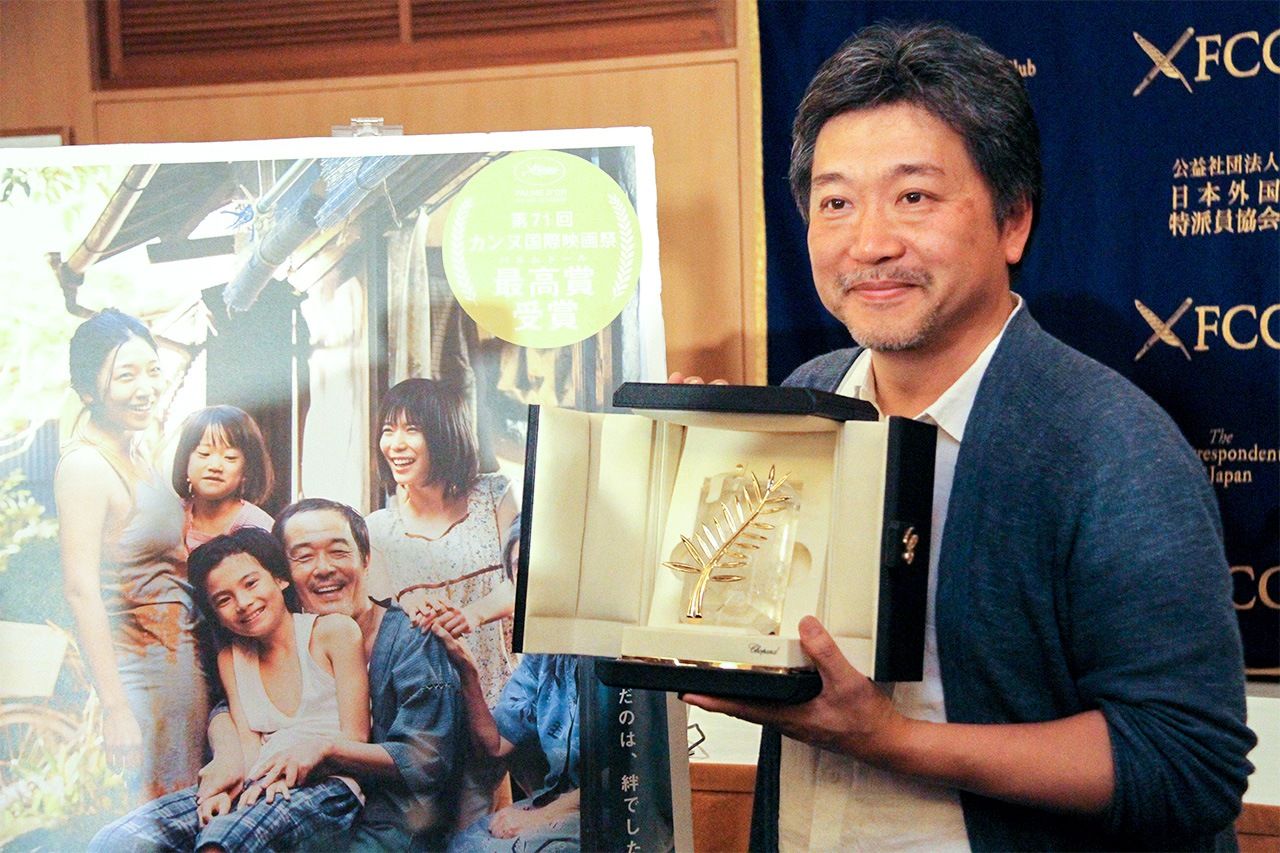
Director Koreeda Hirokazu’s Manbiki Kazoku (Shoplifters) won the Palme d’Or at the Cannes Film Festival. Koreeda displays his award at the Foreign Correspondents’ Club of Japan in Tokyo in May 2018.
In print and on screen, Heisei was headlined by boys like the titular character Conan from the TV anime series Meitantei Konan (Case Closed) and Monkey D. Luffy of the manga One Piece, which made the Guinness Book of World Records as the most-published series of a single title. As of March 2019, One Piece has sold over 450 million copies worldwide. Last year, meanwhile, Meitantei Konan: Zero no shikkōnin (Detective Conan: Zero the Enforcer), the twenty-second theatrical outing for the boy detective, amassed ¥9.2 billion at the box office—attesting to the enormous popularity of the 7-year-old sleuth.
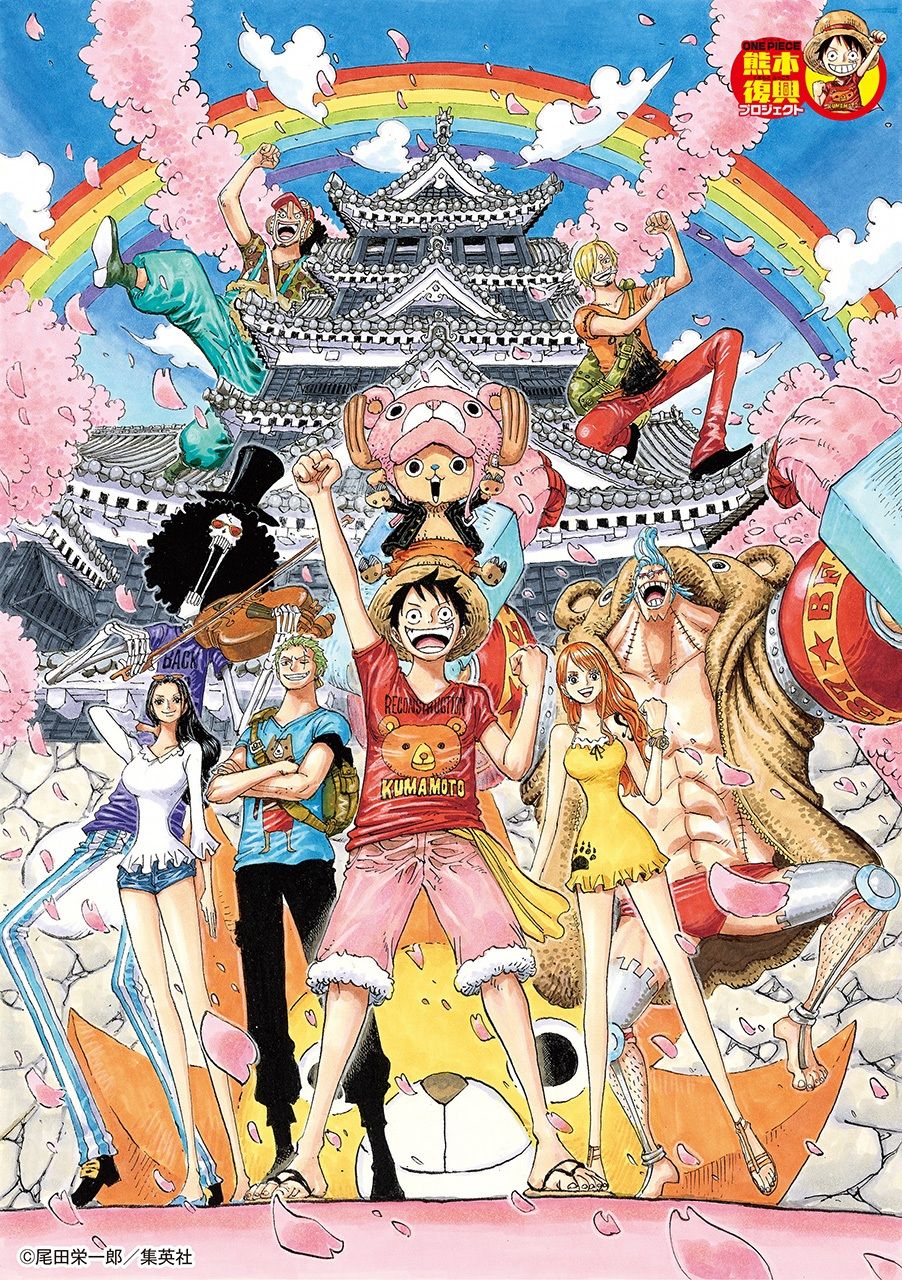
One Piece is today a global phenomenon, with hundreds of millions of copies sold during the Heisei era. Creator Oda Eiichirō provided this image of his characters in front of Kumamoto Castle to cheer on Kumamoto residents following the powerful earthquakes that struck in April 2016. (Courtesy Kumamoto Prefecture; © Jiji)
Discussion of the Heisei Boy must touch on his deep love of video games. Nintendo’s Game Boy, released in April 1989 at the dawn of Heisei, became the most popular series of handheld gaming systems in history, surpassed only by its successor the Nintendo DS. But even this super duo couldn't match Sony’s PlayStation series. The original PlayStation launched in 1994 and sold over 100 million consoles, only to be topped by the 150 million PlayStation 2 units that gamers eventually bought.
In many ways, video games shaped the personality of the Heisei Boy. He is far less interested in actual human interaction than the world flickering on screens, big and small. Not surprisingly, Heisei has been an era of plummeting birth rates and rising ratios of singles, the latter prominent among men. By 2035, 50% of the Japanese populace is projected to be single—but thanks to the titles that follow Tetris and Pokemon on the go, and Mario and Street Fighter at home, they probably won't be lonely.
Age of the Akimoto Idols
In other ways the Heisei Boy is embodied by media fixer Akimoto Yasushi, who gave Japan the phenomenally popular all-girl pop group Onyanko Club in the Shōwa era. He was a man ahead of his time—he knew the enormous marketing potential of schoolgirls, and in 1985 created an afternoon TV program that revolved around a special “club” of girls aged 14 to 19. At one point there were close to 100 “club members” all vying for a spot in front of the cameras. A lucky few got signed up for lasting careers in TV idol-dom before the Onyanko Club officially folded in 1987.

Akimoto Yasushi poses with AKB48 members at the thirty-first JASRAC Awards ceremony on May 22, 2013. (© Jiji)
In 2005, year 17 of the Heisei era, Akimoto was up to his old antics again with AKB48—the idol group “you can meet in person,” according to his slogan. Akimoto built a theater in Akihabara dedicated solely to the performances of AKB48. Just like Onyanko, AKB’s 48 members were encouraged to compete with each other for the center spot on stage. The big difference was accessibility—their fans got to “meet” them after each show and, on good days, shake their hands.
The rest is history. The AKB48 franchise now has 134 members in Japan, and has spawned similar groups across Japan and all over Asia. The newest is slated to launch in India this year. And now that Akimoto’s scheme is as solid and mainstream as a department store, hardcore geeks are turning to the chika aidoru, or “underground idols,” touted as unpolished, undiscovered gems performing in select, minor venues. These underground girls endorse a more practical, down-to-earth image on stage, frankly discussing their day jobs (as waitresses in maid cafes, for instance) or professing to subsist on ramen noodles.
Ways to Say Goodbye
In many ways, Heisei focused on breaking free from Shōwa, but sought to go about this as gently as possible. Still, the farewell was at times as sloppy, emotional, and protracted as a divorce trial that seemed to drag on. In different light, though, it could appear more like a kiss from a movie scene, perfectly choreographed and amply dramatic—the kind of goodbye kiss that lingers in the mind long after the lights come on.
(Originally written in English. Banner photo: AKB48 members take the stage as part of a grueling eight-day, 15-performance series in Tokyo. Taken on January 12, 2019. © Jiji.)